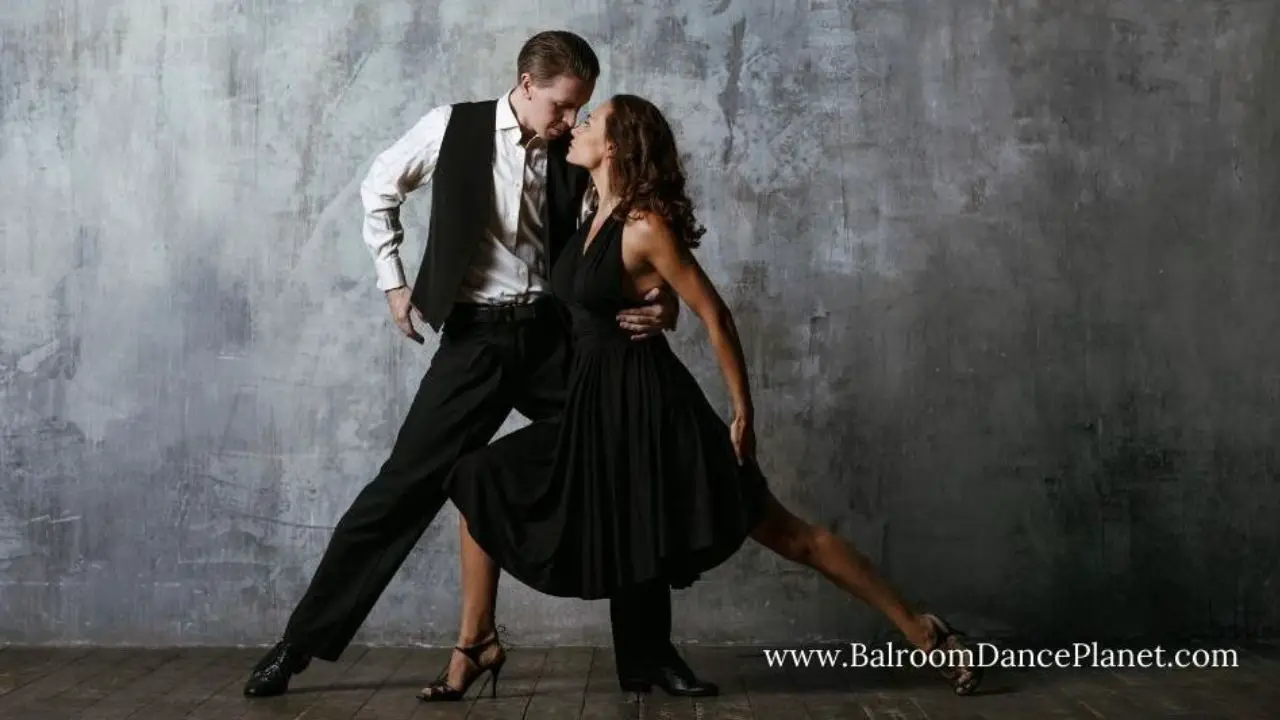When people first decide to learn how to dance, they often wonder what the difference is between Ballroom and Latin dance and which one is right for them.
Ballroom and Latin are a lot of fun, but they are two different dancing styles.
Let’s find out more!
Note: We hope you love our articles! Just so you know, as an Amazon Associate, we earn from qualifying purchases. Thank you if you use our links; we really appreciate it!
What is the Difference Between Ballroom and Latin Dance
Ballroom dance is typically more structured and elegant, while Latin dance is more fluid and sensual.
Most people are familiar with the two main types of ballroom dance:
Latin and Standard.
Latin dances originated in countries such as Cuba, Brazil, and Argentina, while Standard dances come from Europe.
Both styles are danced competitively and socially around the world.
However, they have some distinct differences.
Ballroom dance is typically more structured and elegant, while Latin dance is more fluid and sensual.
Latin dances are generally faster-paced and use more hip movement than Standard dances.
Ballroom dance is often danced to classical music, while Latin dance can be danced to various genres.
While the specific steps and movements vary depending on the type of ballroom dance, the general style is characterized by graceful movements and elegant posture.
Ballroom dance is often danced to classical music, which provides a steady tempo and appropriate mood for the dancers.
On the other hand, Latin dance encompasses a wide range of styles, including salsa, merengue, and tango.
The music for Latin dance is similarly varied, drawing from genres such as pop, rock, and even hip-hop.
Ballroom dancers generally use more precise steps, while Latin dancers are freer with their movements.
Ballroom dances follow a linear path, while Latin dances incorporate circular patterns.
Ballroom dancing is often performed in couples, while Latin dancing can be done alone or in couples.
The clothing worn by ballroom dancers is usually more formal, while Latin dancers dress more casually.
The Hold Is Different
The “hold” in dance is the position of the partners.
Ballroom dancing uses what is called a closed hold, where the partners face each other with the lady resting her left arm on the man’s right shoulder.
The man places his right hand on the lady’s left shoulder blade, and the man’s left-hand holds the lady’s right.
This position is always maintained in Ballroom dances.
In Latin dances, the partners switch between different holds depending on what the dance calls for.
They can have an open hold, a closed hold, a double handhold, or a single handhold.
The variety of dance steps will dictate which hold to use.

Music and Timing
Ballroom and Latin dances have very different music and timing.
Ballroom dancing has a slow and graceful pace, where the two partners glide across the room effortlessly with the music.
Latin dances have a much faster pace and are fun and lighthearted.
Most of the time, Latin dances do not travel the room.
Latin can have high energy and hip action in addition to footwork.
It is a livelier, sexier style of dance.
The Footwork

The footwork is another difference between these two styles of dancing.
In Ballroom, the footwork is all in the toe and heel…
And the dancers keep their feet parallel to one another.
In Latin dance, the dancers turn their feet out and they use the balls of their feet.
This makes the two styles very different in technique.
Often people think all dances are similar with slight variations, but Ballroom and Latin dances are two different styles of dancing.
Both are a lot of fun, and you should choose the one that sounds the most fun to you.
Latin may be the right choice if you want to dance to lively music and show off your style.
If you want to learn how to elegantly glide across the dance floor to your favorite classical piece, Ballroom will be right up your alley.
What are the Names Types for the Dances
There are many different types of ballroom dances, each with its unique set of steps and rhythms.
Waltz, foxtrot, tango, and Viennese waltz are all popular choices for traditional ballroom dancing.
Latin dances such as salsa, cha-cha-cha, rumba, and paso doble are popular for adding a bit of spice to their dancing.
Where can I Find these dances?
Ballroom dancing is often done in competitions or performances, while Latin dancing is enjoyed at social events and nightclubs.
Ballroom dancing is a more formal dance requiring specific techniques and steps, while Latin dancing is a more relaxed and fun dance that allows people to express themselves.
Both types of dance are enjoyable but best suited for different occasions.
FAQ
What is the difference between ballroom and Latin dance?
Ballroom dance is typically more structured and elegant, while Latin dance is more fluid and sensual. Latin dances are generally faster-paced and use more hip movement than Standard dances.
What type of music do ballroom dancers usually dance to?
Ballroom dancers typically dance to classical music, which provides a steady tempo and appropriate mood for the dancers.
What are the names of some popular ballroom dances?
Some popular ballroom dances include the waltz, foxtrot, tango, and Viennese waltz.
What type of clothing do ballroom dancers usually wear?
Ballroom dancers typically wear more formal clothing, such as dresses or suits.
Where can I find ballroom dances?
Ballroom dances are typically done in competitions or performances. You can also find ballroom dancing lessons at some dance studios.
[simple-author-box]
You may also like!
Share the Love!
Recommended Guides





Leave a Reply